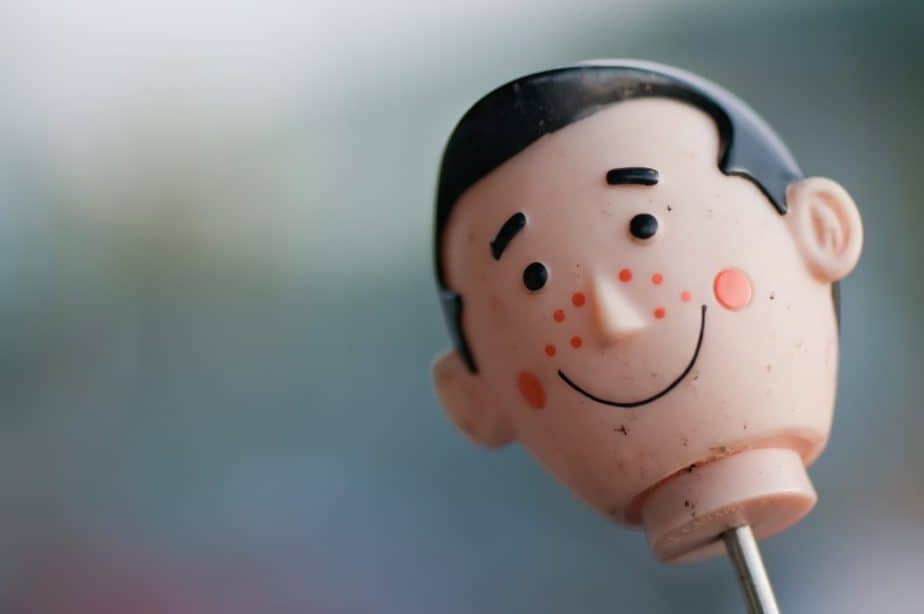Table of contents
Nebula Genomics DNA Report for Acne
Is acne genetic? We created a DNA report based on a study that attempted to answer this question. Below you can see a SAMPLE DNA report. To get your personalized DNA report, purchase our Whole Genome Sequencing!


What is Acne?
Acne vulgaris (acne) is a very common skin condition. It causes acne lesions that can be pimples (zits), pink bumps, whiteheads, blackheads, and small red, inflamed patches of skin (such as cysts).
It most commonly manifests as pimples on the face, forehead, chest, shoulders, and upper back. The blemishes observed in acne result from the blockage of pores by excess oil, dead skin cells, and bacteria. The condition only occurs in the hair follicles and oil glands (also known as sebaceous glands).
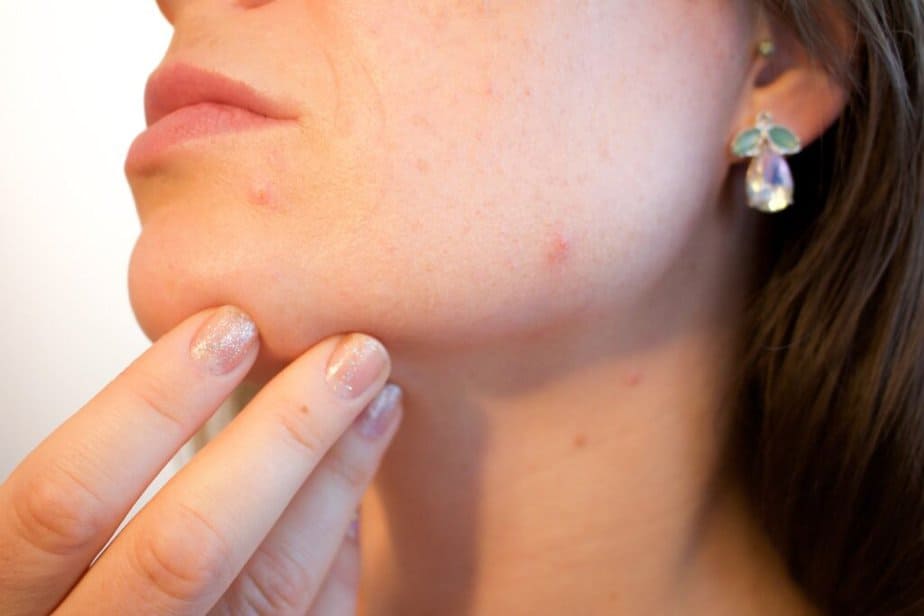
Although it can affect people at any age, it is most common in adolescents during and after puberty. An estimated 80% of all people between the ages of 12 and 30 experience some form of acne in their lifetime. It can be caused by a number of genetic and environmental factors, including fluctuating hormone conditions, stress, and humidity.
Is Acne Genetic?
While there is no acne gene, genetic factors do play a role in whether you are susceptible to developing the condition. Genes that affect sensitivity to hormones, a key cause of the condition, can run in families. Additionally, some people naturally have more oily skin than others, increasing their chances of being acne prone.
The field of genetic research on acne is relatively new. In fact, a study published in 2018 claims to be the “world’s first acne genetics study.” Here, scientists used a genome wide association study (GWAS) linking 15 genome regions to an increased risk of developing acne.
While some studies have suggested that those with a family history of acne are more likely to develop it themselves, there needs to be additional research in this area.
Current Research on Acne
Interestingly, there have not been many research studies focused on acne.
Experts dub a 2018 study the world’s first acne genetics study. In this work, researchers linked the dominance of acnes to 15 genome regions. They analyzed 26,722 people’s DNA, of which more than 5602 persons had acne at the time of the study. The result showed that the condition’s development did seem to have consistent occurrence and dominance in some regions than others.
The study, a collaboration between Professor Jonathan Baker of St. John’s Institute of Dermatology and Professor Michael Simpson’s of Genomic Medicine Group, studied 5602 patients from different parts of the world with extreme acne conditions. They looked for common genetic variations in all 5602 patients affected and identified a variant previously linked to another rare condition known as ectodermal dysplasia.
The condition is caused when people have two mutated versions of the WNT10A gene. All the respondents with acnes had the WNT10A mutation, while the other part of the 26,722 samples without acnes had only one copy of the gene.
The lead author of the study, Professor Jonathan Baker, stated that finding a genetic tie with acne is a great leap forward as it would make it easier for medical practitioners to find an effective treatment for the condition. He acknowledged that the current most effective treatment, isotretinoin (Roaccutane), has considerable side effects and is linked to congenital disabilities in pregnant women.
Other studies
One of the only other studies carried out to draw a genetic link with the condition was a 1984 twin research. The study was not exactly direct research on acne genes and relied heavily on identical twins’ 100% gene similarities. The logic was that if identical twins both have acnes, then the condition had a genetic predisposition. Based on these observations, the study suggested that acne had a genetic leaning.
Another twin research followed the first, and the researchers reached the same conclusion.
The first genetic research compared acne presence in 930 identical twin pairs. The researchers found that identical twins had similar levels of acne, skin oil secretion, and acne severity. The second genetic study, which was independent of the first, compared 458 identical twins, and researchers established that acnes were present in both individuals of an exact twin pair 81% of the time.
The general belief among researchers is that more genes are yet to be identified, which are related to genetics.
Epidemiology
According to The Global Burden of Disease Study 2010, acne is the eighth most common skin disease. The worldwide prevalence of the condition at that time was 9.4%, including 50 million Americans. The burden of the condition varies between different countries and age groups, with adolescents having a higher risk of acne than other age populations.
It usually begins during puberty and continues into adolescence and young adulthood. Approximately 85% of young adults between ages 12 and 24 reported at least a minor form of the condition.
Although acne generally approves as people age, it can still occur into adulthood, affecting those in their 30s and 40s. As of 2014, experts beleive that it affects up to 15% of adult women.
Symptoms
The four most common symptoms of acne are pimples, whiteheads, blackheads, and nodules and cysts. Patients may have one or a combination of these signs. They may also come and go as the condition progresses. The American Academy of Dermatology Association describes each of these symptoms in detail:
Whiteheads
A whitehead is a raised and white or fleshed color blemish on the skin. Whiteheads happen when oils and dead skin cells build up and plug the opening of a pore. Because of this, experts refer to as a “closed pore.”

Blackheads
Like whiteheads, blackheads begin to form when oils and dead skin cells plug the opening of pores. As this process continues, the pores may widen and cause a blackhead or “open pore.”
These blemishes form their characteristic color when buildup inside the pore reacts with oxygen in the air.
It’s important to use acne treatment for blackheads since squeezing them can cause an infection and permanent scarring.
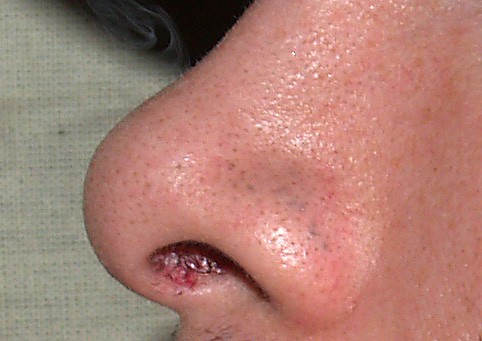
Pimples
Unlike whiteheads and blackheads, which are caused solely by the buildup of oils and dead skin cells, pimples occur when normal skin bacteria also get trapped in the pore. Bacteria can multiply quickly in excess oil. As more and more bacteria accumulate, the area in the pore swells (becomes inflamed) and forms a pimple. Acne stimulates inflammation is a result of an overactive immune system.
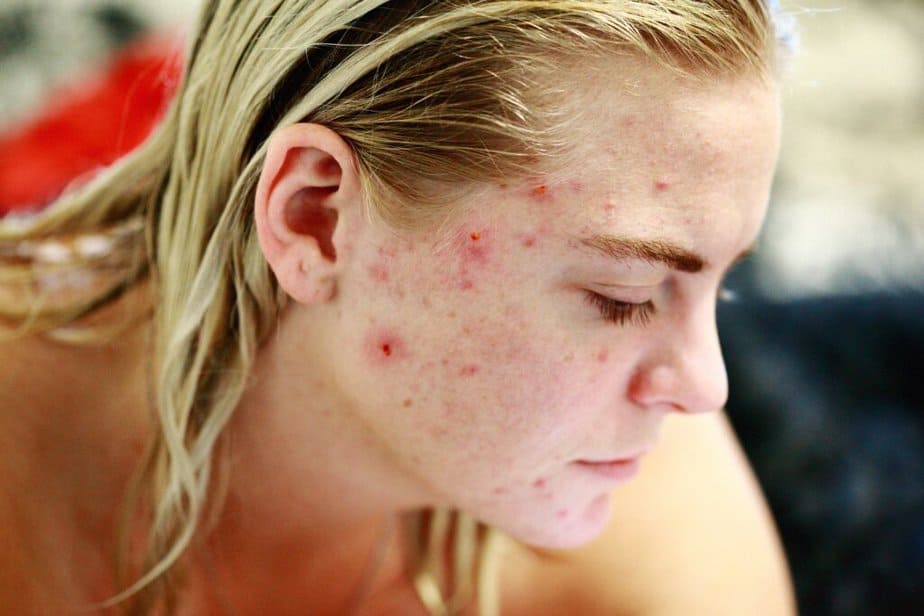
Nodules or cysts
This type of symptom occurs when the oils, dead skin cells, and bacteria penetrate deeply into the skin and cause inflammation from there. Because the inflammation is so deep, these blemishes tend to be larger and can be tender or painful. Cystic acne and nodules are essentially the same, except that the former causes pus filled cysts while nodules feel harder and contain no pus.
Although many people outgrow acne, sometimes it results in lasting signs that go beyond the condition itself. Permanent scars may form after the condition clears. It is difficult to predict who will develop acne scars, but it can occur if someone has long-lasting acne without treatment.
Dark spots are another condition that may occur after the acne clears. Unlike scars, the spots will eventually clear on their own, but this process can take years. Darker spots take longer to clear, although there is treatment to help reduce these spots.
Patients with acne may experience low self-esteem issues that negatively impact a person’s life, especially in adolescents and young adults. Low self-esteem often leads to other mental health problems like anxiety and depression.
Causes
The condition is most closely related to fluctuating hormone levels, which is one of the reasons it is so common in teenage years and in young adults. Experts believe androgen hormone activation, which occurs during puberty, to be the main driver. If you are particularly sensitive to these sex hormones, you are more likely to develop and retain acne.
Other environmental and lifestyle factors can make it worse. These risk factors include:
- Fluctuating hormone levels around the time of a woman’s period
- Picking at skin blemishes
- Clothing and headgear
- Heavy sweating or high humidity
- Using oily or greasy hair or skincare products or working in an area where you routinely come in contact with grease (restaurants where there are greasy food surfaces and frying oil)
- Stress, which increases the hormone cortisol, can lead to a temporary flare
- Some medications, especially those that manage hormones like testosterone or estrogen
There is a widespread belief, especially among young people, that certain foods contribute to acne. According to the Cleveland Clinic, some research studies link certain foods such as skim milk, whey protein, and diets high in sugar to breakouts, but that research is still controversial. There has been no evidence to suggest that chocolate has an effect on acne.
Diagnosis
While any health care provider can typically diagnose acne, it is usually best to make an appointment with a skin specialist called a dermatologist. Specialists in clinical dermatology will observe the breakouts on your skin, paying attention to where the breakouts are located and what types they are. Based on this information, the dermatologist can determine if you have the condition.
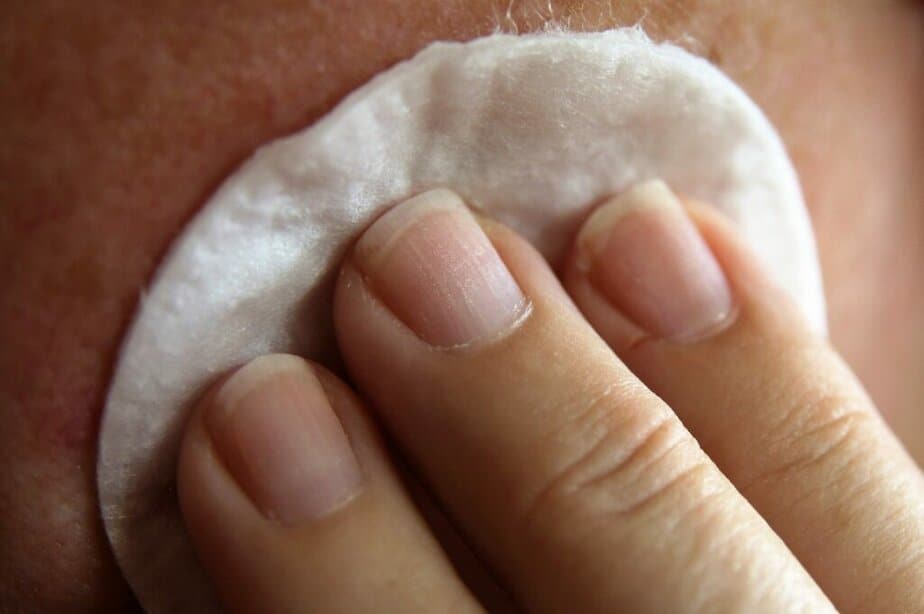
It’s often most helpful to have a specialist assist with diagnosis. They can provide additional health information and access to more effective treatments. Sometimes, traditional acne can look like other conditions that need alternative treatment, like acne inversa or perioral dermatitis. A dermatologist can also rule out more serious diseases like skin cancer.
Treatment
Many people treat acne with over-the-counter skincare products. Doctors also generally recommend gently washing your face twice a day, in the morning and evening. If you find that these products are ineffective, you may want to talk to your dermatologist, who can prescribe a stronger treatment plan to add to your skin and hair routine.
Acne treatments work to reduce oil production or treat bacterial infection. However, even with prescription medications, it can take up to 8 weeks to notice improvement and months or years for the condition to clear up completely.
The recommended type of treatment often depends on the patient’s age and the severity of the condition. Treatment options for pregnant women are limited due to the potential for side effects. Your dermatologist will most likely recommend follow-up appointments for 3 to 6 months until the condition improves.
Mayo Clinic describes some of the most common prescription treatments:
Topical medications
Patients normally apply these noncomedogenic products and medications to the surface of the skin to treat mild acne.
Retinoids and retinoid-like drugs: These medications come as creams, gels, and lotions and are used to treat moderate cases. Applied to the skin in the evenings, they prevent plugged hair follicles.
Topical retinoids may make your skin more sensitive to the sun. They can also cause dry skin and redness, especially in people with skin of color.
Antibiotics: These medications kill excess skin bacteria and reduce inflammation and redness. Patients use these in combination with other treatments. For the first few months, you may use both a retinoid and an antibiotic.
Typically, you apply the antibiotic in the morning and the retinoid in the evening. Then, you often combine the antibiotics with benzoyl peroxide to reduce the likelihood of developing antibiotic resistance.
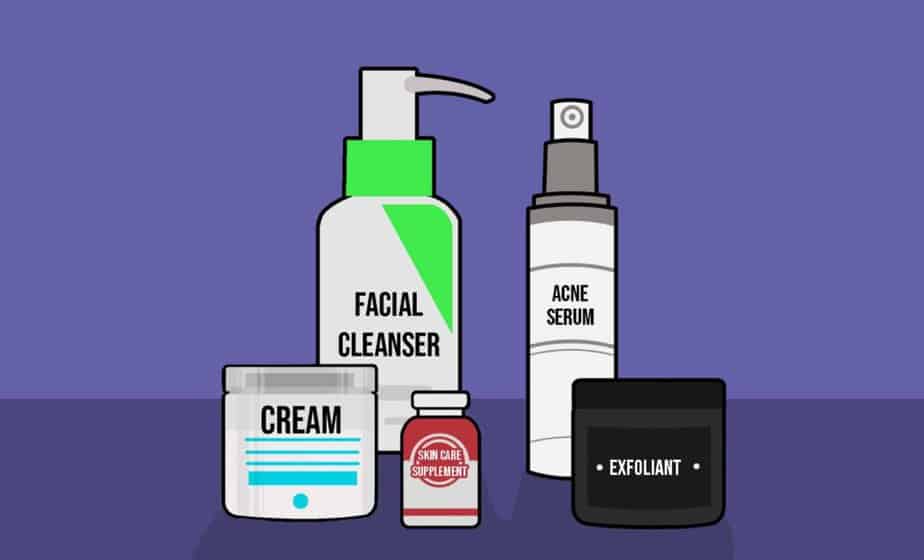
Azelaic acid, salicylic acid, and benzoyl peroxide: Azelaic acid is a naturally occurring acid with antibacterial properties produced by a yeast. It can also be used to manage discoloration that may result from the condition. This is one of the few treatment options available to pregnant women. Side effects include skin redness and minor skin irritation.
Salicylic acid may help prevent clogged pores, but research on its effectiveness is limited. Like azelaic acid, salicylic acid may cause discoloration and minor skin irritation. Benzoyl peroxide is very effective at treating pimples. It removes excess oil and dead skin and helps kill acne causing bacteria.
Dapsone: This medication is recommended for inflammatory acne, especially in women with acne. Side effects include redness and dryness.
Oral medications
If the condition is severe enough based on a professional medical opinion, stronger acne medications may be prescribed to control it. You should always seek medical advice before taking oral medications.
Antibiotics: Used for moderate to severe acne, antibiotics reduce bacteria. Since long-term antibiotics increase the risk for antibiotic resistance, doctors usually recommend only taking these medications for as short a time as needed. Also, they are combined with other drugs such as benzoyl peroxide to reduce this risk.
Combined oral contraceptives: These medications combine progestin and estrogen and may also be used for women with acne who are also prescribed contraceptives. Side effects may include weight gain, breast tenderness and nausea. They are also associated with an increased risk of cardiovascular problems, breast cancer, and cervical cancer.
Anti-androgen agents: This drug works by blocking the effect of androgen hormones on the oil-producing glands. Possible side effects include breast tenderness and painful periods.
Isotretinoin: A derivative of vitamin A, it is used to treat moderate to severe acne that hasn’t responded well to other treatments. Potential side effects include inflammatory bowel disease (Crohn’s disease and ulcerative colitis), depression, and severe birth defects. All people receiving isotretinoin must participate in an FDA-approved risk management program.
Other therapies may include light therapy and corticosteroid injections, which quickly relieve the pain and size of a severe outbreak.
You can learn more from the National Institute of Arthritis and Musculoskeletal and Skin Diseases website!
If you liked this article, you should check out our other posts in the Nebula Research Library, including those that cover eczema and psoriasis.
November 13, 2023
